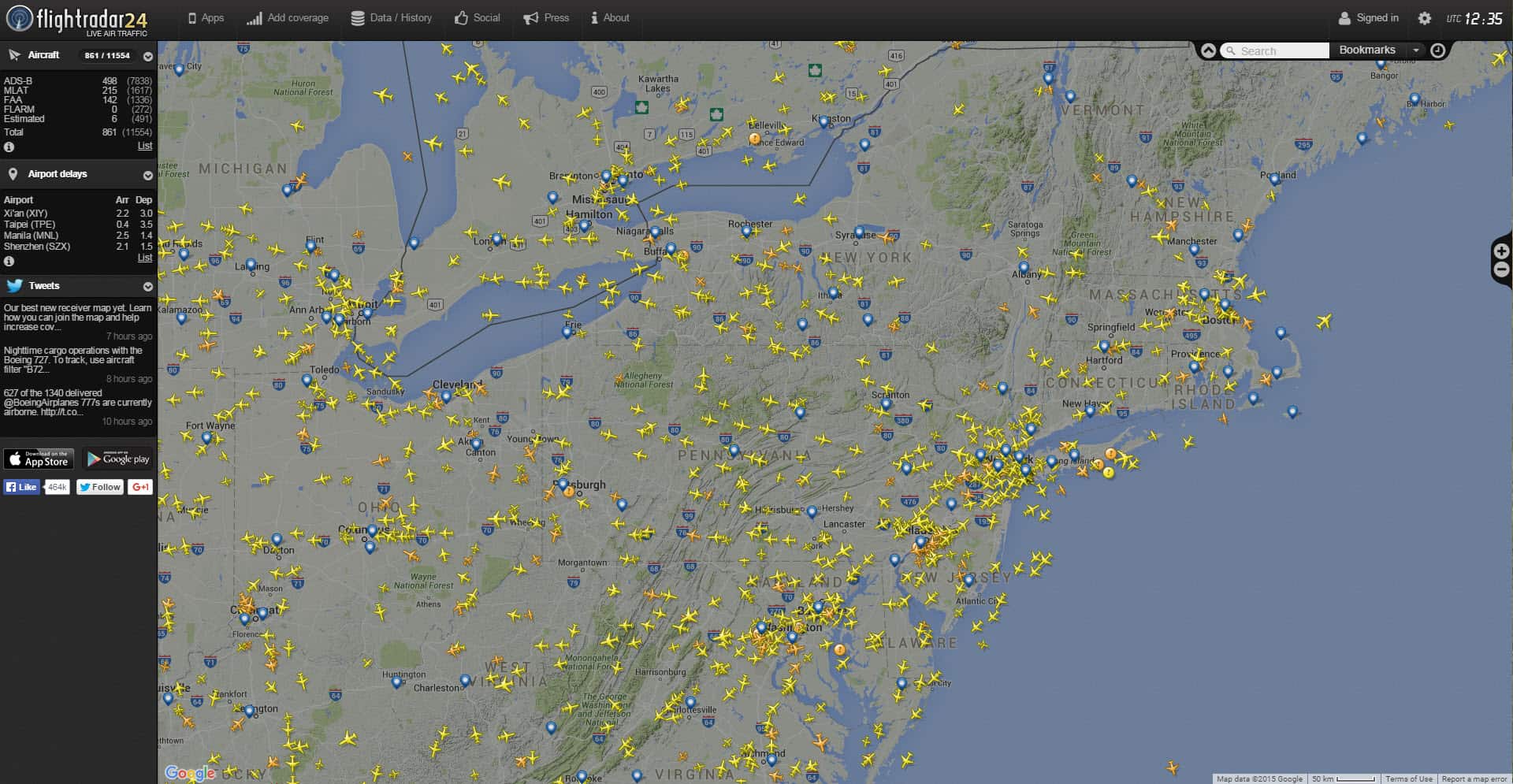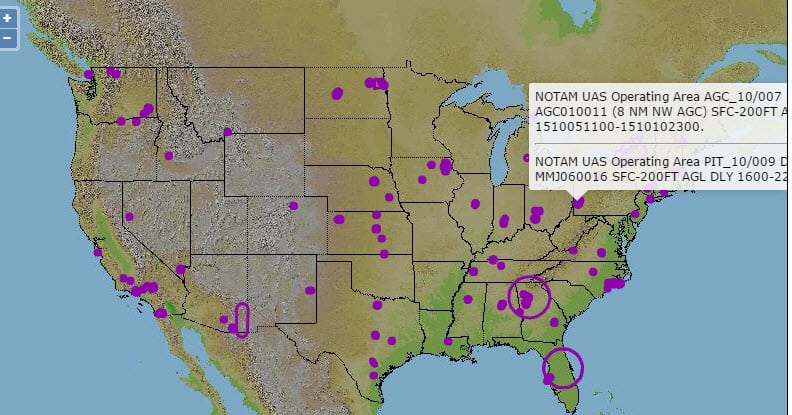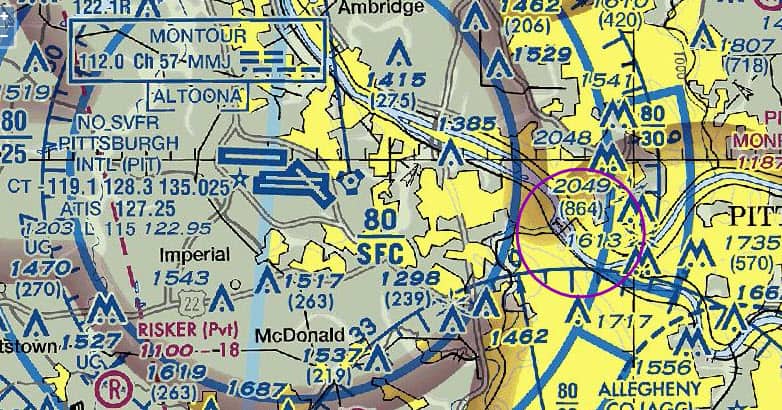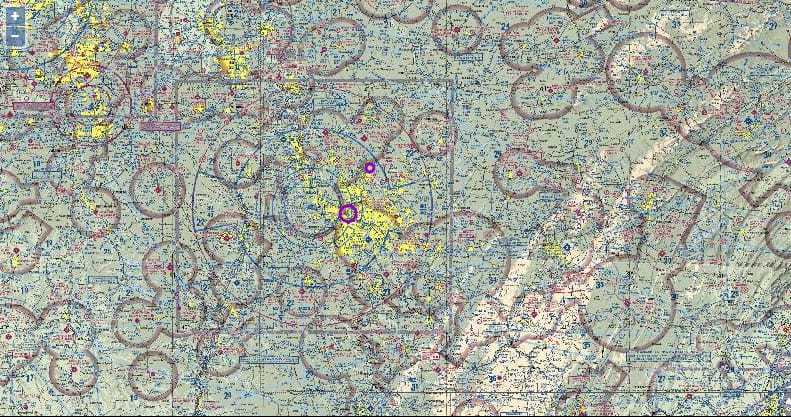FAA Proposes nearly $2 million fine against drone operator.
I see this from two perspectives. I am a surveyor that is very involved in aerial mapping. And I am a pilot.
I have said before that I think regulation is necessary. A drone should not be allowed to fly in any controlled airspace without having a transponder, ADS-B out, and filing a flight plan, and be operated by someone who understands the rules and regulations (i.e. licensed drone pilot). Yes, that will add weight to the platform, but I think it is critical. I went to a UAS conference in Reno last week, and there are still a lot of restrictions, even if you get a 333 exemption from the FAA. Line of sight only, no people within 500 feet, limited altitude, etc.
Idiots like these guys make things more difficult for those who want to open up the restrictions.
I think this exemplifies the troubles that come about from the increased ease of access to technology. And it is unfortunate, because I am a HUGE advocate of technological advances.
These drones aren't toys for sure. And when you can monetize the usage of things like this, that has the potential to tempt users to "bend the rules" and do things that they shouldn't do. The unfortunate part of this is that some of the things that these users may be tempted to do can have some serious effects on the health and safety of others.
And I absolutely agree that idiots like this make things more difficult for the legitimate, and legitimately responsible, user.
I always wonder where these "record fines" go?
Does it go into an special account dedicated solely to public education on drone safety?
--------
This is something I asked myself when I heard about the potential for BILLIONS in fines against Volkswagen.
Do the VW fines go into a special fund dedicated to health related lawsuits or to the development of clean technology to meet the extremely stringent pollution requirements? I doubt it.
Now you went and did it! Tick-Tock-Tick-Tock
I guess I started it.
As someone who was out conducting a UAV Survey today this amuses me. We have so much freedom in Australia to investigate and utilise new tech and equipment.
While we are a country with a lot of freedoms, one must keep in mind that nowhere else in the world has the same volume of air traffic, both commercial and general aviation as the US. The US has 13,500 airports, Australia has 480. Each US airport has a certain class of airspace around it, ranging in size from 1 mile to 30 miles or more.
I can get in my plane and fly pretty much anywhere except Washington DC, mostly without filing a flight plan, except in certain classes of airspace around towered airports and large cities. Even then I simply file my flight plan and go. I went up last night and flew for an hour with no flight plan, not talking to anyone until I came back to land, just sightseeing and enjoying the flight. I did monitor the CTAF (common traffic advisory Frequency) when I was near a small airport with no tower, as all planes landing/taking off are supposed to self announce. However, anytime I am going cross country (i.e. from airport to airport), I always file an IFR flight plan. It always helps to have another set of eyes.
The area I live in and fly out of is Class B airspace, although where I fly out of is underneath it. I hear aerial photo and lidar flights all the time requesting permission to fly certain lines, and the ATC are always very accommodating. They aren't trying to keep people out, just keep planes safe and separated.
Starting in 2020 all planes will be required to have an ADS-B out transponder. Many have it now. ADS-B broadcasts the ID and position of each plane continuously. This can be received by ATC even where there is no radar coverage, and can also be received by other planes. Currently you can fly without a transponder and without a radio outside of controlled airspace, but I would consider that to be extremely stupid.
So I think the least we can do is be visible (via transponder) and file a flight plan to be safe. All it will take is one drone/commercial accident with loss of life to really put the damper on drone flying.
I have a small ADS-B receiver that is about the size of a pack of cigarettes. It has an ethernet port on it. It will display (on a PC) all planes in the area that are transmitting ADS-B out. Since not all planes currently have ADS-B out, it will not show all planes. But, after 2020 it will. But there is a program called FlightRadar24 that takes output from a network of these receivers, and combines it with FAA radar data to show all planes. Here is a screen capture of the current NE US traffic, 10/07/15 at 8:35AM EDT. Yellow are planes with ADS-B and orange are planes without (FAA radar). ADS-B is live but FAA radar is delayed 5 minutes for some stupid bureaucratic reason.

This next image is the current UAS flight areas (from Lockheed Martin, www.1800wxbrief.com), and I clicked the one near me. Basically it says there will be UAS flights from 10/05/15 at 11:00 until 10/10/15 at 23:00, location is 11 nautical miles from the Allegheny VOR on a 010 radial (azimuth). From the surface up to 200 feet above ground level.
The next map shows that on an aviation sectional (purple circle). It is right on the approach path to Pittsburgh International (shown as runways to the west), but the FLOOR of that airspace is at 2500 feet above MSL. What it does not make clear is what is the actual altitude of the drone OPS area, it just says 200 AGL. But in any case it is under the overhead class B airspace. Note that to the west a couple of miles the class B airspace is from the surface to 8000 feet. In that area I would think drone operations would not be permitted at all, or definitely special permission would be required and contact with ATC would be required as well.
The one requirement I don't understand is the 200 ft AGL limitation. Planes are NOT supposed to fly below 500' AGL over uncongested areas, 1000' over congested areas, except landing/takeoff. So it seems like an excessive buffer (200 to 1000 or 200 to 500).
John I'm looking at purchasing a fixed wing UAS and if so will follow all FAA rules regarding Section 333, COA, etc. Realistically, since we'll be operating below 500' AGL, will there be that many restrictions on where we can fly? I know about the 5 miles from airports rule, is that towered airports or any runway that services a crop duster? We have a lot to learn.
I have a lot to learn as well! I am just now starting to try and understand the regulations, which of course are constantly changing. My understanding is that without a special authorization (site specific?) you must fly under 200' AGL, and there cannot be any "non-participants" (the public) within 500 feet. I am working with another company on a joint venture, and our first drone should arrive today, an inexpensive model to do some tests and setup a workflow and test software.
We have a great site (that I posted about here) where we did a very detailed ground topo. I flew over it last night and realized that it is within 1 mile of an airport so that is a no-go. Here is a zoomed out image of the sectional where you can see all of the controlled airspace around airports (circles with purple shading). So there is a lot of it.
Lee: I originally thought I wanted a fixed wing. But, after attending the UAS conference last week I think the rotor craft are the way to go.
John, how big was the Reno conference? I'm at the conference in Vegas put on by the same group that does SPAR & ILMF and there is about 1,600 attendees.
I was already registered for Drone World Expo in Sacramento when I heard about the ones in Reno and Las Vegas, I'm going out there next month.
Much smaller, maybe 200-300. It was put on by ASPRS and was specifically mapping drone, whereas I think the Vegas conference is all kinds of drones?
John Hamilton, post: 339577, member: 640 wrote: Much smaller, maybe 200-300. It was put on by ASPRS and was specifically mapping drone, whereas I think the Vegas conference is all kinds of drones?
Yup. There is a bigger agricultural, inspection, and construction presence here.
My firm has a big footprint in DOT bridge inspection contracts, so I'm more interested in drones for that space. We don't do a lot of earthwork type surveying and the traditional aerial mapping for design projects is so cheap from firms like Quantum these days that I'd rather pay them.
John Hamilton, post: 339557, member: 640 wrote: All it will take is one drone/commercial accident with loss of life to really put the damper on drone flying.
Sadly, this is true. And unfortunately, the legislation will likely drag their feet in putting the appropriate regulations into place that will help prevent such a thing, until it happens.
4-5 million drone size (often much larger) Canadian geese navigate the sky every day unregulated. Extremely few deadly aircraft strikes occur (last one in 1995?). We drive down the road in half ton vehicles with pedestrians only feet away at 50 mph and think nothing of it (almost anyone can obtain the necessary licensing to do this).
I agree that there needs to be an attempt to stop malicious behavior using drones (i.e purposely flying a drone at an aircraft). Non of the current regulations would stop this however - as law abiding citizens and companies aren't out to do that to begin with and some one that is has no concern for law or regulation anyhow.
The company in the article was posing no more threat to the public safety than all of you did on your way to work this morning. Its my humble opinion that this is complete government overreach and everyone has succumbed to the propaganda. Damn shame.
surveyor85, post: 339711, member: 9748 wrote: 4-5 million drone size (often much larger) Canadian geese navigate the sky every day unregulated. Extremely few deadly aircraft strikes occur (last one in 1995?). We drive down the road in half ton vehicles with pedestrians only feet away at 50 mph and think nothing of it (almost anyone can obtain the necessary licensing to do this).
Geese have a powerful self-interest in avoiding aircraft strikes; drones aren't smart enough to have that self-interest (not yet, anyway).
Almost all of the drivers on the roads went through education then testing then licensing. And roads confine the vehicle's area of operation; open airspace doesn't limit a drone's travel.
I fully support the "government overreach" so that drones are deployed commercially in a safe and well-regulated manner.
Law abiding human operators of drones have a powerful self-interest in avoiding aircraft strikes and have an even greater ability to act on that self interest when compared to a goose ;). If your actions with a drone cause property damage, you WILL be sued. If your actions with a drone result in manslaughter you WILL go to jail.
Judging by the amount of accidents and death that occur on the road every year, the licensing and education of drivers has either been a complete failure or such accidents are unavoidable due to human error. If it is a case of the later, than licensing is inept at preventing accidents. That's not my point though. A vehicle, when operated in a law abiding manner, is still incredibly more dangerous and has the potential to cause far more property damage and loss of life than a 5 lbs drone operated under the same constraints (very limited requirements/people of all levels of intelligence). However, you wouldnt levy a $2 million dollar fine on a company who's driver broke the speed limit on the road. I know my company would have long since been out of business if that were the case haha.
A drone could fall out of the sky and hurt or kill someone without warning. Highly unlikely, but could happen. A car, on the other hand, does not randomly fall out of the sky. I saw a single rotor drone helicopter demonstrated that would definitely slice a person to shreds. Granted most multi-copters are not quite as dangerous.
John Hamilton, post: 339741, member: 640 wrote: A drone could fall out of the sky and hurt or kill someone without warning. Highly unlikely, but could happen. A car, on the other hand, does not randomly fall out of the sky. I saw a single rotor drone helicopter demonstrated that would definitely slice a person to shreds. Granted most multi-copters are not quite as dangerous.
Likewise, a drone does not "randomly" hop a curb and mow down an entire family.






